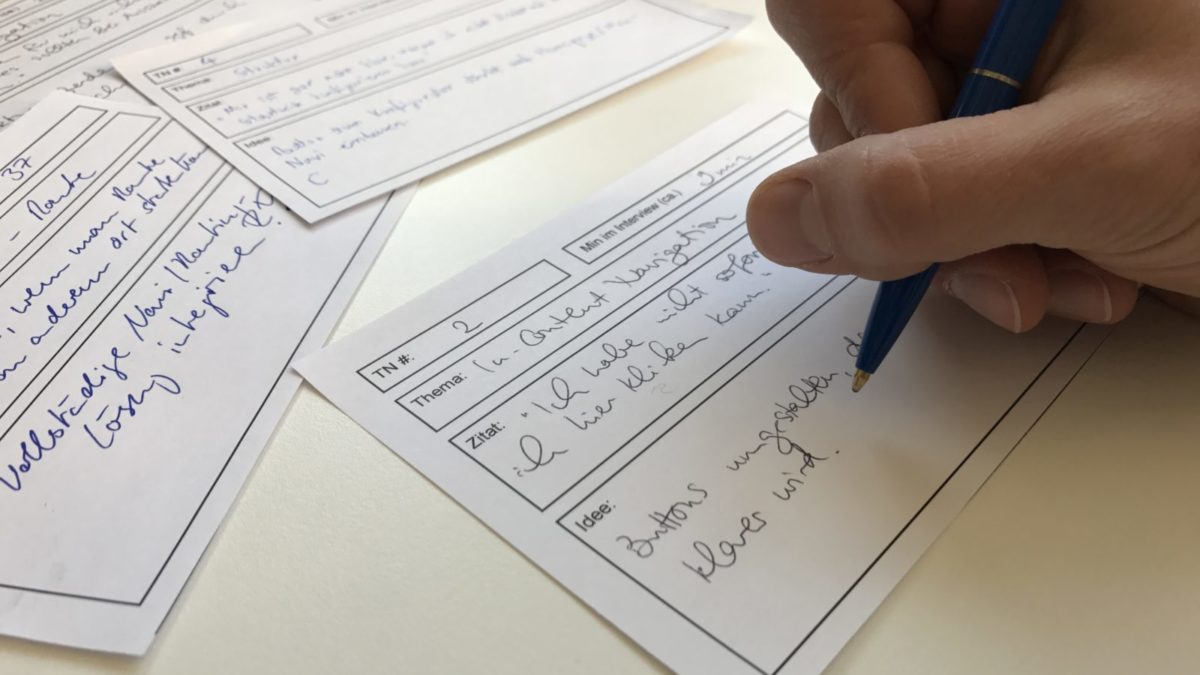Wir haben leider kein passendes Ergebnis gefunden.
User-centered Design in times of agile developments


User-centered Design
In recent years, many online media development teams have recognized the opportunity of user research. User centricity in development pays off: If a website is tested with users in good time, problems with operation and acceptance can be detected early on and resolved comparatively inexpensively. Users are becoming increasingly critical. If a website or app is not user-friendly and its use is associated with negative feelings and frustration, the path to the competitor is not far away.
In the past, the basis for development was almost always the so-called waterfall model and its various successive phases: After a phase of development follows the phase of testing with extensive evaluations with users in user experience tests. Finally, the test results are reported back to the development team and the website is finally optimized based on the results. Ideally, a new test phase follows, and so on. According to the waterfall model, phase by phase an optimal user experience and usability is approached.
User research falls victim to time pressure
So far, so good? In theory, the procedure with development and test phases according to the waterfall model is recommended. In practice, however, it is noticeable that user research tends to decline despite the knowledge of the profit. But why? The problem is that the development phases are successively streamlined. New interactive products should not remain in the developer's drawer for long, but should be brought to market quickly. This often leaves hardly any time for classic user tests, which can stop the development process for several weeks.
Does this mean that user research has to be dispensed with? No, because user research also continues to develop.
Fast user tests for agile projects
Fast user tests can also be accommodated in agile processes without lengthy interruptions in development. In addition, the test phase can also be designed to be agile, in which all stakeholders (e.g. developers or agencies) observe the tests and at the same time actively participate in shaping the further development. If a usability problem arises during a website test, ideas for improvement are collected directly. After a day of testing with different users, all ideas are discussed together and workable solutions are developed to make the website more user-friendly and pleasant to use. Subsequently, the solutions can be directly implemented in the prototype. The result: the development process was hardly interrupted and design decisions can still be made in the interest of the user.
A particularly efficient procedure includes regular short test phases, so that the development always receives a user-centered fine-tuning. Here, different functionalities can be optimized repeatedly and different areas of the interface can be tested anew. Thus, the users can be placed in the center of the development in the future.
